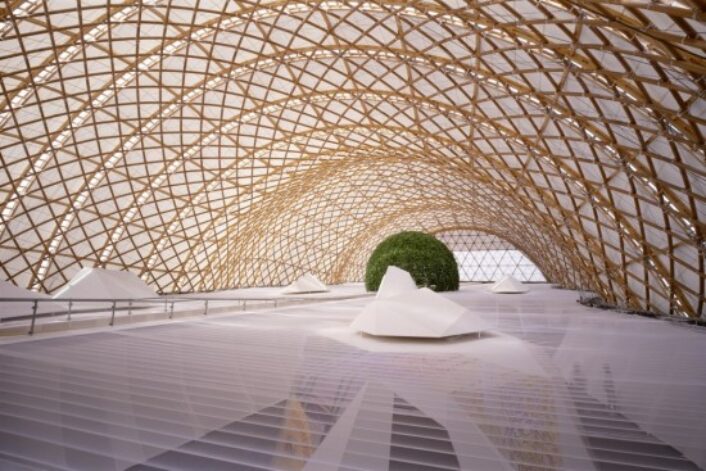Fine Art
Hiroshi Senju’s “At World’s End”
Sundaram Tagore Gallery is hosting a breathtaking exhibit by Hiroshi Senju at both their Madison Avenue and Chelsea galleries.
Known best for his large paintings of waterfalls, he recently began exploring cliffs as his latest muse. At World’s End celebrates Senju’s monumental year.
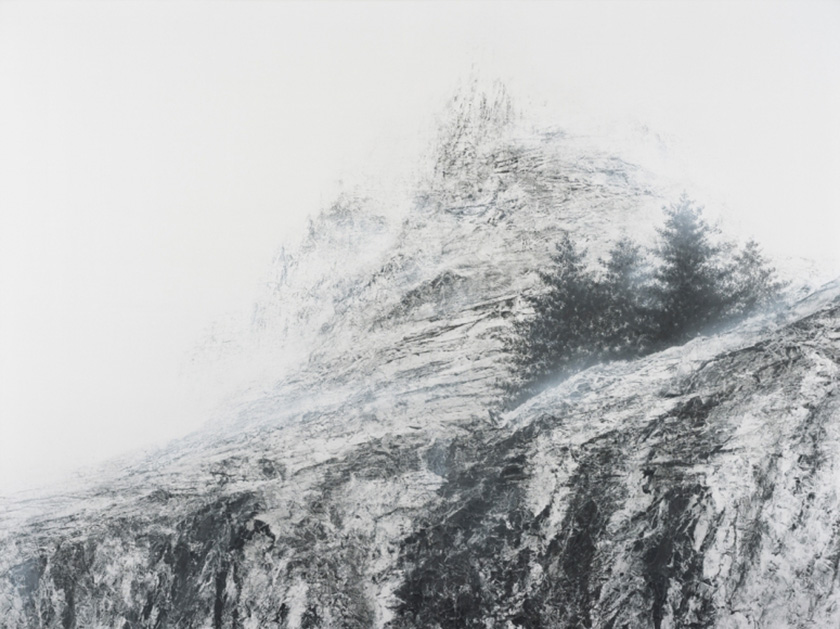
Hiroshi Senju, At World’s End #2, 2017. Acrylic and natural pigments on Japanese mulberry paper mounted on board, 76.3″ H X 102″ W. Image courtesy of Sundaram Tagore Gallery.
Senju’s artwork is currently on view at the Los Angeles County Museum of Art until next month. This past spring his work was significantly exhibited in the Japanese Gallery at The Metropolitan Museum of Art.
Lastly he was honored with the Isamu Noguchi Award and an enormous public commission to produce 42 folding screens for the Kongōbu-ji Buddhist temple at Mount Koya in Japan.
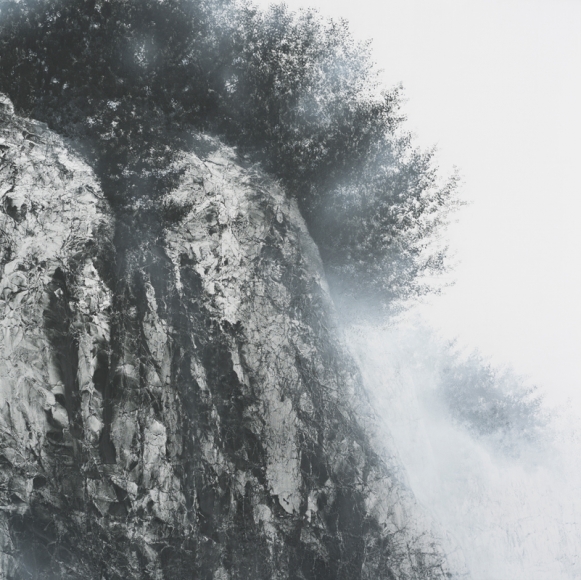
Hiroshi Senju, At World’s End #5, 2017. Acrylic and natural pigments on Japanese mulberry paper mounted on board, 63.8″ H X 63.8″ W. Image courtesy of Sundaram Tagore Gallery.
Admired and respected throughout Japan, Senju’s work can be found in various settings: the Haneda Airport, The Daitoku-ji Temple in Kyoto, and the Hiroshi Senju Museums which is dedicated exclusively to Senju’s artwork.
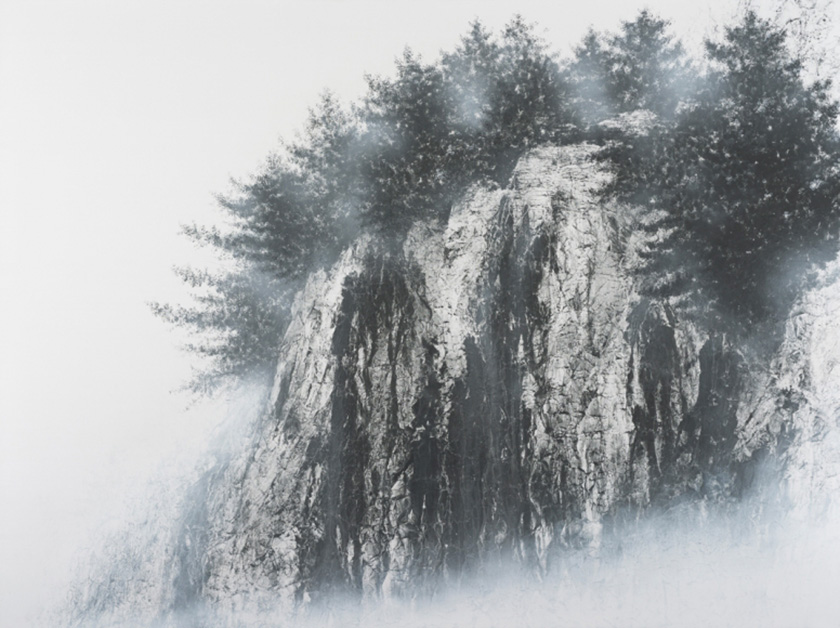
Hiroshi Senju, At World’s End #6, 2017. Acrylic and natural pigments on Japanese mulberry paper mounted on board, 76.3″ H X 102″ W. Image courtesy of Sundaram Tagore Gallery.
The Metropolitan Museum of Art has added a pair of six-panel folding screens by Senju to its collection. Shrine of the Water God completed in 2015 was gifted to the museum in 2016.
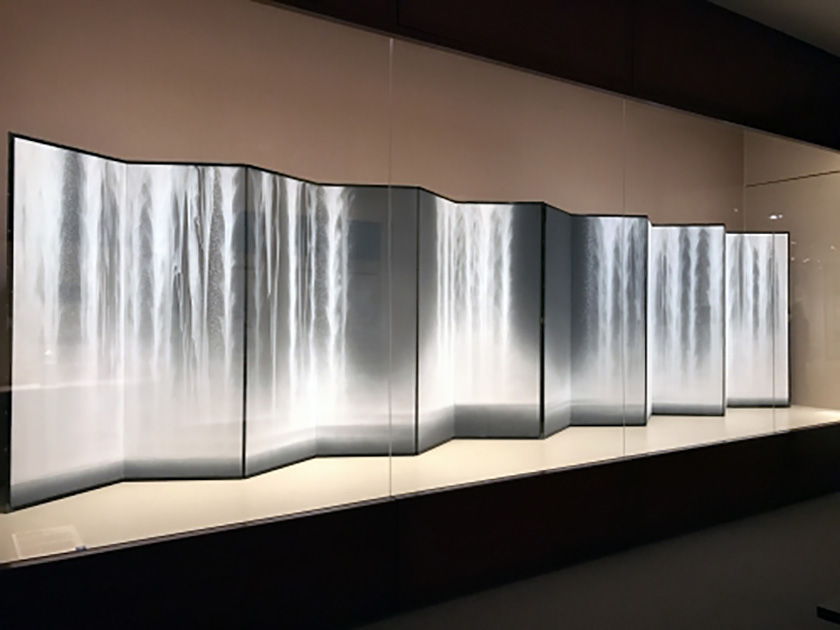
Hiroshi Senju, Shrine of the Water God, 2015. Pair of six-panel folding screens; natural pigments on Japanese mulberry paper. Each screen: 68 in. × 12 ft. 4 1/2 in. Image courtesy of Sundaram Tagore Gallery.
Hiroshi Senju is a contemporary artist recognized as one of the few experts of the thousand-year-old nihonga style of painting. Nihonga focuses on themes of nature. It emphasizes the use of traditional Japanese materials like pigments made from ground stone, minerals, and shells and corals suspended in an animal-hide binder and washi paper. Washi paper is unique for its strength and resistance to tearing even when damp.
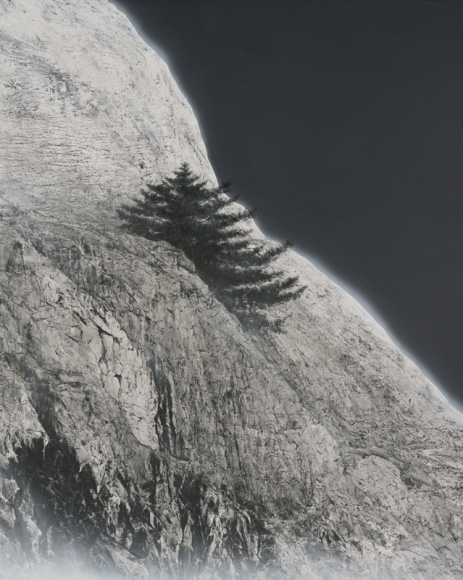
Hiroshi Senju, At World’s End #16, 2017. Acrylic and natural pigments on Japanese mulberry paper mounted on board, 89.5″ H X 71.6″ W. Image courtesy of Sundaram Tagore Gallery.
This fibrous paper naturally mimics the textured surface of rocky cliffs, especially once pigment is applied. When we viewed his artwork at Expo 2017, we were awestruck at the scale, clarity, and detail of his artwork.
Most interesting is when you view the artwork closely you are able to see the textures, layers of the paper and pigments, and how Senju cleverly uses the natural properties of his medium to illuminate his artwork.
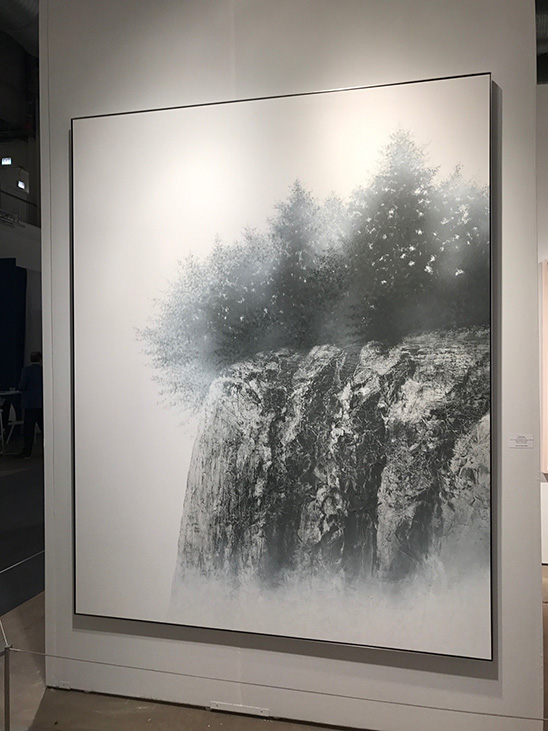
Hiroshi Senju, At World’s End #10, 2017. Acrylic and natural pigments on Japanese mulberry paper mounted on board. 89.5″ H X 71.56″ W. Image courtesy of Suzanne Lovell Inc.
Over the years Senju has carefully honed and sourced his tools and materials. Senju favors mulberry washi paper which can only be made in winter. His brushes are all handmade and each brush has an appointed function in his process. From conception to completion, Senju’s process is completely artistic.

Hiroshi Senju, At World’s End #22, 2017. Natural pigments on Japanese mulberry paper mounted on board, 51.3″ H X 152.6″ W. Image and details courtesy of Sundaram Tagore Gallery.
The exhibit will come to a close Saturday, January 13, 2018. If you are interested in attending details are below.
Exhibition Details:
Hiroshi Senju
At World’s End
Tuesday, November 28, 2017 through Saturday, January 13, 2018
Sundaram Tagore Gallery
NY/Madison Avenue
1100 Madison Avenue
New York, New York 10028
-and-
NY/Chelsea
547 West 27th Street
New York, New York 10001
